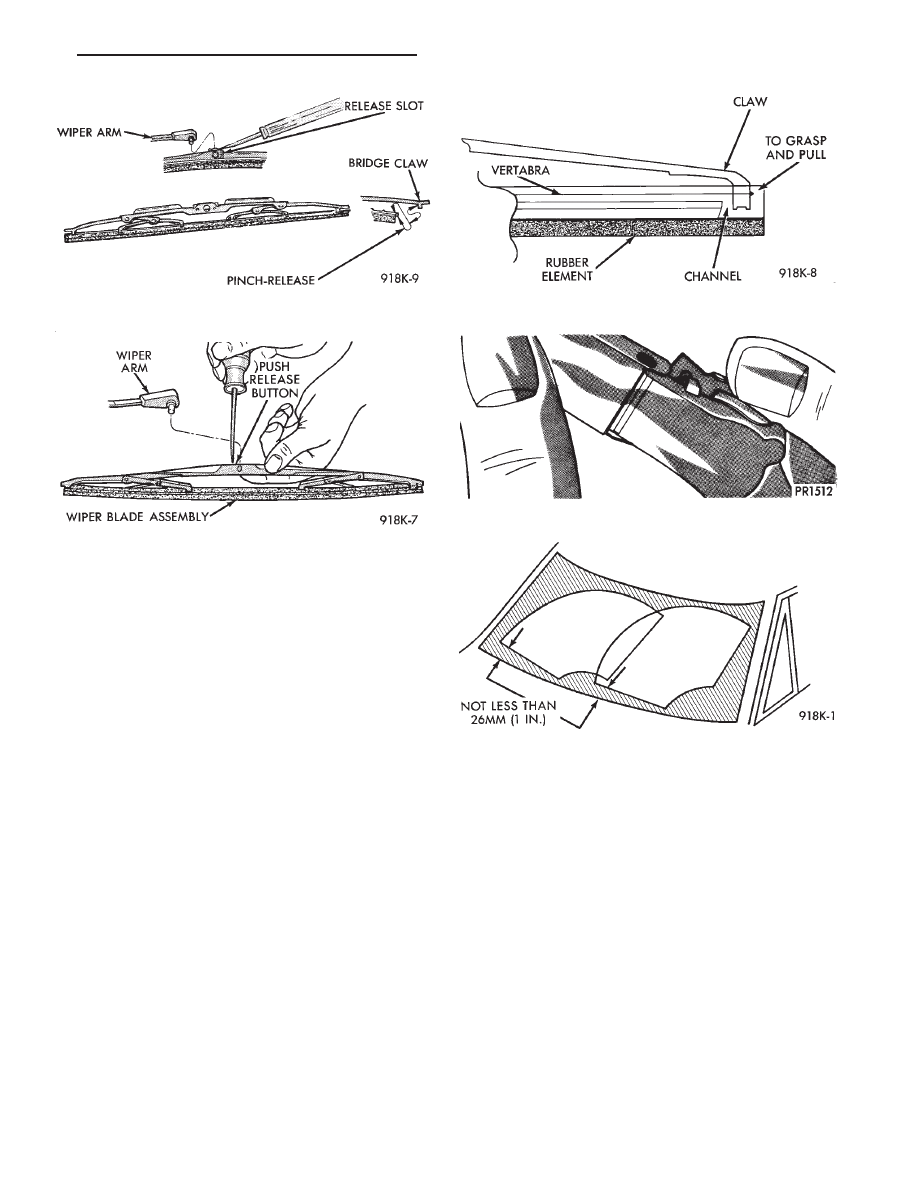Chrysler Town & Country/Voyager, Dodge Caravan, Plymouth Voyager. Manual - part 220

(3) Set arm on pivot and push down.
(4) Lift arm and push latch in to release arm to
windshield.
(5) For proper alignment of wiper arm, refer to
Wiper Arm Adjustment.
WIPER ARM ADJUSTMENT
(1) Cycle the wiper motor into the PARK position.
(2) Check the tips of the blades in blackout area.
From the bottom edge of the windshield to the blade
should be no closer than 25 mm (1 inch) (Fig. 6).
(3) Operate the wipers if the requirements are not
met, check linkage and pivot assembly for worn parts.
Fig. 4 Wiper Blade and Element
Fig. 5 Removing Wiper Arm
Fig. 2 Wiper Blade and Element
Fig. 3 Wiper Blade and Element
Fig. 6 Windshield Wiper Arm Adjustment
.
WINDSHIELD WIPER AND WASHER SYSTEMS
8K - 3